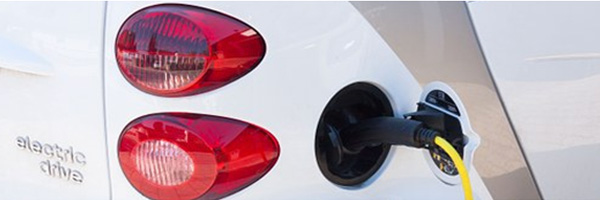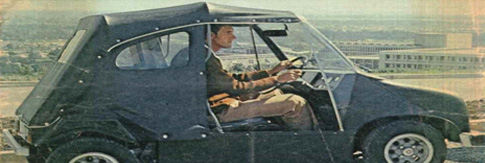Home › EIDA Forum › Today’s Discussion and Announcements › In 1974, Australia saw the advantage of electric vehicles – and did nothing
- This topic is empty.
-
AuthorPosts
-
-
at #4379
Tingting Zhang
KeymasterAustralia sorely lags behind the world in the transition to electric vehicles. Yet a Senate Inquiry report by the federal government unmasked a lack of vision from the two major parties in quickly moving Australia along the road to zero emission transport.
It seems it has always been thus. Way back in 1974, a similar report produced by a federal government department delivered a plethora of evidence of why electric vehicles would be a good idea.
The Senate inquiry included a similar take from individuals, companies and community organisations with interests ranging from automotive, mining, and energy to health, pollution and climate.
Yet committee chair Senator Tim Storer was only able to pin down agreement from his counterparts that a national plan “should be” considered as the major parties, Coalition and Labor, could only bring themselves to agree to have a plan.
The recommendations in the report, while recognising the need for policy to facilitate the uptake of electric vehicles across government, public and private fleets, fail to clear the path ahead for Australia to catch up with the rest of the world to reduce transport emissions.
It’s not the first time electric vehicles have been recognised in Australia as an answer to many transport-related woes, either.
A report conducted by the Australian Bureau of Infrastructure, Transport and Regional Economics (BITRE) shows that the benefits offered by electric vehicles have been acknowledged by government for a very long time – at least 45 years in fact.
The 200-page report very simply titled “Electric Cars” was published in 1974 at the time of the 1973-4 oil crisis, and was the result of a study by what was then known as the Bureau of Transport Economics (BTE).
This was the 1970s – cars had become increasingly commonplace over the previous 20 years and already air pollution, congested traffic and noise pollution were beginning to bug people.
“It is becoming clear that the community will not accept the rising levels of air pollution caused by motor vehicles. One way of tackling the problem would be to use the electric car as a replacement for the ordinary motor car. This would also reduce noise in cities,” writes author of the report, W.P Egan of the transport engineering branch.
This, and climate change not yet the major crisis it is today.
The 1974 report recognised that a shift to electric vehicles would have effects on the economy (Australia still made its own cars then), on electricity prices, on mining, as well as the need for charging infrastructure, and that the government should have a role in managing these considerations:
Although research and development are not normally taken to include assessments of possible government action, legislative or administrative controls of the use of cars could have a major effect on the market penetration of battery cars. Avenues by which battery cars might be made more attractive than conventional cars, despite the performance limitations of the former, include:
- Selective closures of areas of cities to vehicles other than battery cars.
- Advantageous parking rates (and tolls, where applicable) for battery cars.
- Differential sales tax rates on new-car purchases to overcome the likely higher initial price of battery cars.
- Preservation of low off-peak electricity- tariffs for battery car use (perhaps financed by increases in motor spirit excise rates).
- Not imposing excise on electricity used for battery cars.
Early days of course and little surprise that targets were not yet on the radar – indeed, the revival of electric cars was still a fledgling movement with carmakers mostly delving into concepts rather than actual production vehicles.
Of course, it was also early days for battery tech, so any electric cars that did make it to market (the most successful being the CitiCar of which it is reported 3,500 were made) had a very modest range of 60-100km.
But in 1974 Australia, the BTE’s report saw past that, recognising that this would be suitable for urban use – and that Australia could even take a leading role in improving battery tech:
In preparing information for this report, the BTE gained the impression that some of the battery technology under development in Australia has particular merit, and warrants co-ordination and support to encourage it towards early fruition.
Egan concludes that the case was already clear that Australia should at the very least explore the viability of electric cars in Australia by first importing some, and use them in government fleets (where suitable given the range), then develop a charging network and introducing measures, policies and incentives to make EVs more attractive to drivers. Sound familiar?
By: Bridie Schmidt
EIDA Editor Note: Electric cars are hardly new. In 1904, they made up one-third of the cars in large American cities. In their heyday, about 1912, 20 000 electric cars roamed the land. Th e world land speed record of 106 km per hour was held in 1899 by a battery-powered car, and enthusiasm for the ‘electric’ was manifested by such later examples of electrical traction as tip trucks, taxis, buses, and, of all things, a semi-trailer. Ref: ecosmagazine.com
In a 1973 -1980 project Flinders University developed and built an electric car at its Bedford Park campus, South Australia. The range of the vehicle was limited by its lead-acid batteries and its printed circuit motors and controller systems were novel at that time.
By: BRIDIE SCHMIDT
-
-
AuthorPosts
- You must be logged in to reply to this topic.


